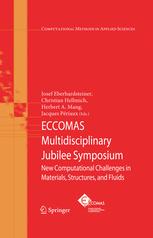

Most ebook files are in PDF format, so you can easily read them using various software such as Foxit Reader or directly on the Google Chrome browser.
Some ebook files are released by publishers in other formats such as .awz, .mobi, .epub, .fb2, etc. You may need to install specific software to read these formats on mobile/PC, such as Calibre.
Please read the tutorial at this link: https://ebookbell.com/faq
We offer FREE conversion to the popular formats you request; however, this may take some time. Therefore, right after payment, please email us, and we will try to provide the service as quickly as possible.
For some exceptional file formats or broken links (if any), please refrain from opening any disputes. Instead, email us first, and we will try to assist within a maximum of 6 hours.
EbookBell Team

0.0
0 reviewsThis book contains a collection of full papers presented at the ECCOMAS Multidisciplinary Jubilee Symposium -- New Computational Challenges in Materials, Structures, and Fluids, held in Vienna, Austria, February 18-20, 2008.
Computational challenges in materials, structures, and fluids, with a focus on multidisciplinarity and multi-scale analysis, are a hot topic in the engineering sciences (aerospace, civil, mechanical, etc.). Modern society in general and applied engineering sciences in particular are confronted with problems with levels of complexity never encountered before in the history of mankind.
The solution of scientific problems involving fluids together with solids and structures, not to forget materials, is of paramount importance in a technical world of rapidly increasing sophistication, referred to as the Leonardo World by the eminent German philosopher Jürgen Mittelstrass.
With this in mind, the ECCOMAS Managing Board decided to bring the principles of Applied Sciences into focus of the Jubilee Symposium by reconsidering the sources of relevant knowledge on processes occurring at different spatial and temporal scales. They are related to phenomena on different levels such as the nano-, micro-, meso-, and the macro level.